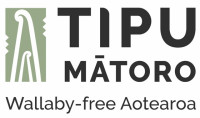Wallabies are not a new problem. But they are a national pest problem that needs a joint effort to solve. We work alongside our partners in the Tipu Mātoro National Wallaby Eradication Programme. Together we have a vision for a wallaby-free Aotearoa.
Find out more about this pest animal and what we and our programme partners are doing to control wallaby and stop their spread.
Why wallabies are a pest
Find out more about the damage wallabies do.
Wallaby control work
Find out what we are doing to eradicate wallabies from Canterbury/Waitaha.
Tipu Mātoro National Wallaby Eradication Programme
Find out what Biosecurity New Zealand and partners are doing to tackle the wallaby problem nationwide.
Report a wallaby sighting
If you see a wallaby outside of Canterbury’s containment area, dead or alive, please report it.

